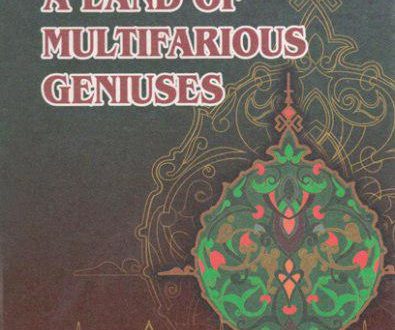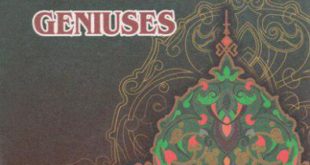“Tabsirat al-adilla”
The shortened title of the book “Tabsirat al-adilla” is deciphered as “Tabsirat al-adilla fi usul ad-diyn a’la tariqat Abu Mansur al-Maturidi” (Commenting on the styles of religion in accord with the principles suggested by Abu Mansur al-Maturidi). From the scientific and practical points of view, this book is considered as the biggest and most important work ever written by Abu-l-Muin an-Nasafi. Perhaps therefore, the author of the book became famous by the honourable title “Sahib at-Tabsira” (The Author of Tabsira). This book contains precious ideas about the ways of commenting on disputable problems of the science of kalam that were reformed under the principles offered by a famous master of this field of science Imam Abu Mansur al-Maturidi. It is noteworthy to mention that Imam Abu Mansur al-Maturidi (870-994) founded a special Maturidiya School in Maveraunnahr as a great representative of “ahli Sunnah va-l-jamaat”. Therefore, these schools were called by his name. Nearly at that time, Imam Abu-l-Hasan al-Ash’ari (873-935) founded in Iraq another school in this direction, Ash’ariya School. In Egypt one more school in this direction, Tahaviya School, founded by Imam Ahmad ibn Muhammad Abu Ja’far at-Tahavi (852-933) was widely spread. The ideas and teachings of these three schools were the same, i.e. they presented the teachings of “ahli Sunnah va-l-jamaat”. At the same time, these schools had their own vision on a number of proble ms promoted by their masters and leaders. However, it was natural that due to their location in different geographic areas (Maveraunnahr, Iraq, Egypt), they had slightly different approaches to the problems under discussion and these deviations sometimes dealt with the form of the idea and sometimes its meaning. It is necessary to note that Abu-l-Muin an-Nasafi did not promote his own new vision of religious problems but supported the teachings and ideas promoted by his masters and, doing so, he expressed his devotion to their teachings. Thus, with the help of this book Abu-l-Muin an-Nasafi highly appreciated the ideas of his teachers and, at the same time, gave refusals to the ideas of most of their opponents. His views on this problem are stressed in the preface of his book.
As to the content of the book that were suggested for discussion, we can see that after the preface, the author opens a discussion about science and education, and gives them suitable definitions. Then he expresses his views on the faithfulness of imitators. Expressing his ideas about the creation of the world, the author stresses the existence of Allah. The unity of Allah is proved with persuasion and the ideas of non-believers are refused and dispersed ruthlessly. The ideas of the author about positive and negative peculiarities of man are also of much importance. More space is given in the book to such controversial problems as qualities and distinguishing the features of the Prophet (saas), the behaviour and attitude of man to the surrounding world, his characteristic features, his birth and death, his property in the life. Special pages were allotted in the book on the questions of time of birth and death, faith and belief,good and evil. On most of the problems under discussion, the author gave reasonable refusals to the viewpoints of the mistaken opponents. At the end of the book, the author expresses his views on the activities of Imams.
Under the investigation of the book “Tabsirat al-adilla”, an Arabic investigator and a researcher of Al-Azhar University in Cairo Muhammad al-Anvar defended his doctoral thesis. The importance of the book “Tabsirat al-adilla” was also stressed by Hajji Khalifa in his book “Kashf az-zunun”. He wrote, “Abu-l-Muin an-Nasafi’s book is one of the most important books. If you look into its content thoroughly, you may understand and be sure that Najmiddin Umar an-Nasafi’s “Al-aqaid” is simply an attachment to it”. The whole book, as is seen from its title, is devoted to the reasonable commentaries on the teachings of Imam Abu Mansur al-Maturidi.
It is well known that another book written by Imam Abu Mansur al-Maturidi devoted to the science of kalam is titled as “Kitab at-Tawhid” (A Book about the Unity of God), and this book was published in Beirut in 1970 by an Arabic scholar Fathullah Khulaif. Imam Abu-l-Muin an-Nasafi’s “Tabsirat al-adilla” is the second original source on the science of kalam and Maturidiya teachings after al-Maturidi’s “Kitab at-Tawhid”. Due to the perfectness and reasonableness of the ideas promoted in the book, some authors consider that Abu-l-Muin an-Nasafi’s “Tabsirat al-adilla” is more appreciative and important than al-Maturidi’s “Kitab at-Tawhid”. So we can say that not a single other book may contain such perfect and reasonable commentaries on the ideas promoted by Abu Mansur al-Maturidi in his book “Kitab at-Tawhid” as it was done in “Tabsirat al-adilla” by Abu-l-Muin an-Nasafi.
In the second half of the 11th century and the first half of the 12th century, the science of kalam reached its peak. Therefore, “At-Tabsira” contains not only the most important ideas promoted by the founders of the science of kalam as al-Maturidi and al-Ash’ari but also the teachings, ideas, viewpoints as well as appreciations and disapprovals of the other scholars of that time. Alongside with those teachings, it contains commentaries of the author devoted to the definition, description and discussion of the ideas promoted by the founders of the science of kalam. Especially, the author’s refusal to erroneous viewpoints of the opponents of his vision of the problem gave a good lesson on the right support and approval of the teachings of the founders of the schools of the science of kalam. The book also contains correct answers to the ideas and oppositions of different separated parties and rival groups of the mistaken parties in Islam. The most important fact is that the book gives a perfect and rightful approach to the teachings and ideas promoted and supported by the founders and representatives of the Maturidiya, Ash’ariya and Mutaziliya schools in Islam, and provides with clear answers and differentiations to the misleading questions of their supporters.
One of the most important component parts of this book is in the fact that it contains the most precious information about the activities and scientific careers of the scholars who inhabited in Maveraunnahr at that time.
Frorh the information provided by Abu-l-Muin an-Nasafi in his book “Tabsirat al-adilla” about his teacher and master Imam Abu Mansur al-Maturidi, we can cite the following extract saying that when he (Abu Mansur al-Maturidi) died in 944, one of his disciples Ash-Sheikh Abu-l-Qasim al-Hakim al-Samarqandi (died in 953), who used to work in Samarkand in the position of the Head Judge, made orders to engrave on his tomb the following lines: “The owner of this tomb is a man who reached the highest level of knowledge and most of the sciences with the help of his incomparable mind and effort. He did his best to disseminate and spread this knowledge and sciences throughout the world. His works on religion and morality brought him a great fame among the scholars of the Islamic world. He is a genius who disseminated the tasty fruits of his endeavours to people surrounding him”. Moreover, this book also contains important information about the most acknowledged scholars of that time such as Abu Nasr al-Iyadi, Abu-l-Hasan Ali ibn Sa’d ar-Rustughfani, Abu Muhammad Abdulkarim ibn Musa al-Pazdavi and others. We have provided detailed information in the previous articles about the other peculiarities of this huge book containing more than one thousand pages bound in two volumes.
 Imom Buxoriy xalqaro ilmiy-tadqiqot markazi bukhari.uz
Imom Buxoriy xalqaro ilmiy-tadqiqot markazi bukhari.uz











